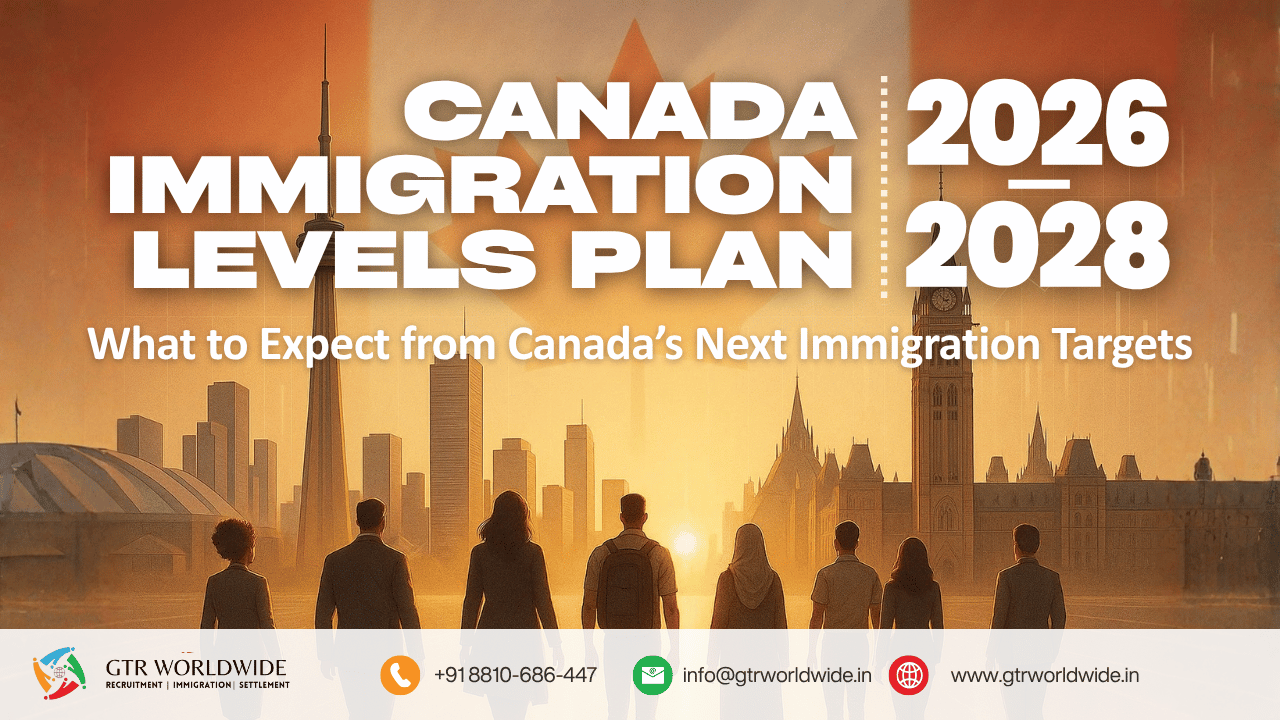Canada Immigration Levels Plan 2026–2028 – What to Expect

Canada’s next Immigration Levels Plan (ILP) 2026–2028 will soon be unveiled, shaping the country’s immigration priorities for the next three years. Following the 2025–2027 plan, which already began moderating record-high immigration levels, this new plan is expected to reflect a balanced approach — ensuring economic growth while addressing public concerns about housing, infrastructure, and integration capacity.
According to the Government of Canada, the ILP outlines the number of new permanent residents the country aims to welcome each year, broken down into three main categories: economic, family, and refugee/humanitarian streams.
1. Expected Immigration Targets for 2026–2028
The previous ILP (2025–2027) targeted 395,000 new permanent residents in 2025, 380,000 in 2026, and 365,000 in 2027.
Experts project that the 2026–2028 plan will maintain a similar or slightly adjusted range, possibly between 360,000 and 400,000 annually. This indicates a stabilization trend after several years of rapid growth.
A report by the Parliamentary Budget Officer (PBO) suggests that reduced immigration may slightly slow overall GDP growth but could improve GDP per capita and ease housing demand — two key concerns influencing upcoming targets.
2. Economic-Class Immigration: Still a Priority
The economic class will continue to dominate admissions, accounting for about 60–62% of total permanent residents.
This includes skilled workers, health professionals, and tradespeople — especially through Express Entry and Provincial Nominee Programs (PNPs).
Analysts from Moving2Canada and Amir Ismail & Associates predict that the government will continue emphasizing talent-driven immigration to address labour shortages in construction, healthcare, and technology sectors.
3. Family Reunification and Humanitarian Commitments
While the focus remains on economic growth, Canada’s ILP will still prioritize family reunification and refugee resettlement.
The Canadian Council for Refugees (CCR) has called for increased family sponsorship allocations and faster processing for humanitarian cases.
It’s likely that the family class will remain around 22% of total targets, while refugee and humanitarian streams make up around 15%.
4. Temporary Residents Now Part of the Conversation
For the first time, Canada’s ILP framework includes temporary residents — such as international students and foreign workers — recognizing their major role in population growth.
Under current policy, the federal government aims to reduce non-permanent residents to 5% of the total population by the end of 2026.
This shift means future immigration planning will coordinate better between temporary-to-permanent pathways, ensuring sustainability in both labour and housing markets.
5. Economic and Social Context
Public attitudes toward immigration have evolved. A survey found that while most Canadians value immigration, many believe current levels are “too high” due to housing and cost-of-living pressures.
In response, the government appears to be pursuing a “smart moderation” strategy — maintaining Canada’s global competitiveness while addressing domestic capacity limits.
The Bank of Nova Scotia’s July 2025 Special Report confirms that slowing immigration growth will help stabilize real estate prices and allow local economies to absorb new arrivals more effectively.
6. Consultation and Flexibility
The federal government has emphasized broad consultations with provinces, territories, and stakeholders before finalizing the ILP 2026–2028.
The final plan, expected in fall 2025, will likely include target ranges instead of fixed numbers to maintain flexibility amid changing economic and demographic conditions.
Conclusion
In summary, Canada’s Immigration Levels Plan 2026–2028 is expected to strike a careful balance between economic needs and social capacity.
While the pace of immigration may moderate, Canada remains committed to welcoming newcomers who contribute to its growth, innovation, and cultural diversity.
Stay tuned for the official release later this year, which will confirm exact figures and category breakdowns.

